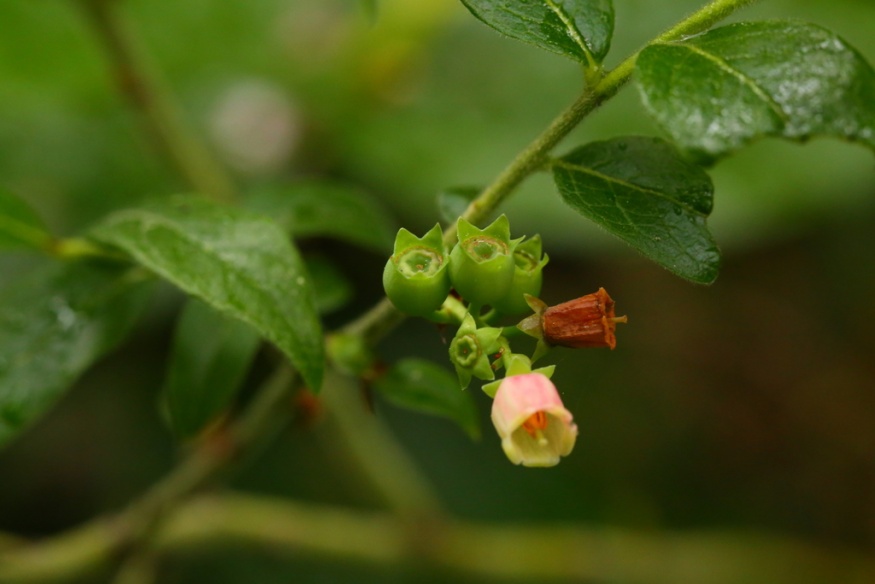About
Velvetleaf blueberry is a low spreading shrub native to North America. Noted for its tasty fruit both to humans and animals, It can be found in woodlands, bogs, slopes, disturbed areas, and rock outcrops; thrives in dry, sandy or rocky areas, but also found in bogs and moist areas. The shrub is usually no higher than 3 feet but spreads horizontally by forming colonies via underground rhizomes.
The twigs are green to brown, very velvety especially when young. Leaves bright green above, paler underneath and elliptic to lanceolate in shape. From May to June, white, pink, pale green or hinted purple solitary drooping flowers appear. Their shape resembles an upside down urn. Clusters of fruit follow flowering and are usually blue to sometimes purple-black with a pale frost . Pollination occurs mainly by bees and seeds dispersed by birds.
Velvetleaf blueberry is an important food source for wildlife, especially bears. Whitetail deer and eastern cottontail browse the twigs and leaves. Deer, fox, porcupine, raccoons, wild turkey, and various other bird species feed on the fruit. The fruit is sweet and can be eaten fresh or used in pastries, pies, jams, and other desserts. Though less poplar than other blueberries, Velvetleaf blueberry is sometimes cultivated as a food crop and is grown commercially in New Brunswick and Maine.
references
Fire Effects Information System (FEIS). (n.d.). Vaccinium myrtilloides. Retrieved from https://www.fs.fed.us/database/feis/plants/shrub/vacmyt/all.html
Klinkenberg, Brian. (Editor) 2020. E-Flora BC: Electronic Atlas of the Plants of British Columbia [eflora.bc.ca]. Lab for Advanced Spatial Analysis, Department of Geography, University of British Columbia, Vancouver. Vaccinium myrtilloides Michx. Retrieved from http://linnet.geog.ubc.ca/Atlas/Atlas.aspx?sciname=Vaccinium+myrtilloides
Knoke, D. - Burke Museum Herbarium. (n.d.). Vaccinium myrtilloides. Retrieved from https://biology.burke.washington.edu/herbarium/imagecollection/taxon.php?Taxon=Vaccinium%20myrtilloides
MICHIGAN FLORA ONLINE. A. A. Reznicek, E. G. Voss, & B. S. Walters. February 2011. University of Michigan. Web. November 15, 2020. https://michiganflora.net/species.aspx?id=1236
Plants For A Future. (n.d.). Vaccinium myrtilloides - Michx. Retrieved from https://pfaf.org/user/Plant.aspx?LatinName=Vaccinium+myrtilloides
Shipping
We currently ship seeds to all Canadian provinces and ship plants just within the provinces of British Columbia and Alberta. Seeds ship year-round and usually take a few days (or longer if you are ordering from a distant province). It usually takes 2-5 business days in the mail for plant orders once shipped. Plants are generally available from May to September and can be reserved during off season; Shipping costs are calculated during checkout. Seed orders over $100 ship free! See Shipping for more details.



